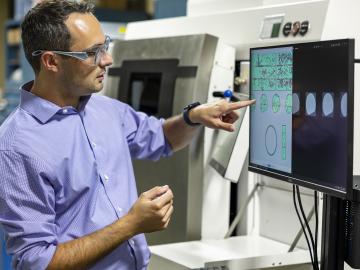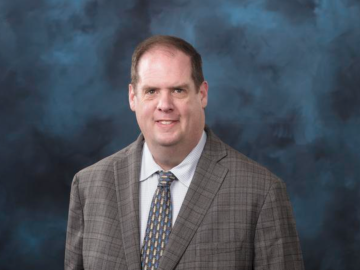Filter News
Area of Research
- (-) Advanced Manufacturing (28)
- (-) Isotopes (13)
- (-) Materials Characterization (2)
- Biological Systems (16)
- Biology and Environment (72)
- Biology and Soft Matter (1)
- Building Technologies (10)
- Chemical and Engineering Materials (1)
- Chemistry and Physics at Interfaces (4)
- Clean Energy (319)
- Climate and Environmental Systems (6)
- Computational Biology (5)
- Computational Engineering (4)
- Computer Science (14)
- Electricity and Smart Grid (1)
- Energy Frontier Research Centers (7)
- Energy Sciences (4)
- Fossil Energy (3)
- Fuel Cycle Science and Technology (1)
- Functional Materials for Energy (6)
- Fusion and Fission (21)
- Fusion Energy (10)
- Geographic Information Science and Technology (2)
- Isotope Development and Production (2)
- Materials (279)
- Materials for Computing (23)
- Materials Synthesis from Atoms to Systems (5)
- Materials Under Extremes (5)
- Mathematics (1)
- National Security (32)
- Neutron Data Analysis and Visualization (2)
- Neutron Science (112)
- Nuclear Science and Technology (42)
- Nuclear Systems Modeling, Simulation and Validation (3)
- Nuclear Systems Technology (1)
- Quantum Condensed Matter (1)
- Quantum information Science (4)
- Reactor Technology (1)
- Renewable Energy (2)
- Sensors and Controls (3)
- Supercomputing (148)
- Transportation Systems (7)
News Type
News Topics
- 3-D Printing/Advanced Manufacturing (18)
- Advanced Reactors (1)
- Artificial Intelligence (1)
- Bioenergy (1)
- Biomedical (2)
- Climate Change (1)
- Composites (3)
- Computer Science (2)
- Cybersecurity (1)
- Energy Storage (1)
- Environment (1)
- Fusion (1)
- Irradiation (1)
- Isotopes (9)
- Machine Learning (1)
- Materials (8)
- Materials Science (6)
- Nuclear Energy (3)
- Security (1)
- Space Exploration (3)
- Sustainable Energy (5)
- Transformational Challenge Reactor (1)
Media Contacts

Researchers at the Department of Energy’s Oak Ridge National Laboratory have improved flaw detection to increase confidence in metal parts that are 3D-printed using laser powder bed fusion.

Oak Ridge National Laboratory researchers have developed a method to simplify one step of radioisotope production — and it’s faster and safer.

ORNL’s electromagnetic isotope separator, or EMIS, made history in 2018 when it produced 500 milligrams of the rare isotope ruthenium-96, unavailable anywhere else in the world.

Jeremy Busby has been named associate laboratory director for the Isotope Science and Engineering Directorate at ORNL, effective April 1.

Zheng Gai, a senior staff scientist at ORNL’s Center for Nanophase Materials Sciences, has been selected as editor-in-chief of the Spin Crossover and Spintronics section of Magnetochemistry.

Jordan Hachtel, a research scientist at ORNL’s Center for Nanophase Materials, has been elected to the Board of Directors for the Microanalysis Society.

Three scientists from the Department of Energy’s Oak Ridge National Laboratory have been elected fellows of the American Association for the Advancement of Science, or AAAS.

Oak Ridge National Laboratory scientists recently demonstrated a low-temperature, safe route to purifying molten chloride salts that minimizes their ability to corrode metals. This method could make the salts useful for storing energy generated from the sun’s heat.

Researchers at ORNL explored radium’s chemistry to advance cancer treatments using ionizing radiation.

Oak Ridge National Laboratory’s Innovation Crossroads program welcomes six new science and technology innovators from across the United States to the sixth cohort.




